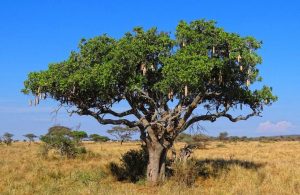With the Ankole people in the Western part of Uganda, the bride’s parents hand her to the groom’s parents during a special ceremony called Okuhingira.
It was one month already since Mbabazi’s fiance Byaruhanga paid her bride price to her parents and since her wedding was just two weeks away, Mbabazi’s parents organised her okuhingira (Giving Away) before the wedding day.
Mbabazi invited friends, relatives and the people from the neighbourhood to come and witness her Okuhingira; her main guests of honour were her fiance’s parents and relatives. She was so happy and wanted everything to be perfect for the ceremony and she had been given many gifts from her relatives and friends.
Mbabazi hails from Ankole in the western part of Uganda. In her culture, once a man asks for a woman’s hand in marriage, he is expected to pay the bride price to her parents, then her parents will organise a okuhingira (giving away ceremony) where they hand her officially to the man’s parents. This was another way of telling the boy’s parents that she was now their responsibility and part of their family.
In the olden days in Ankole, men would not ask for the woman’s hand in marriage but once a man was interested in a woman, he would investigate the woman’s family and if he found the woman’s family suitable for him and his family, he would then pay a visit to the family with his entourage to make his intensions known to the girl’s family.
If the woman’s family accepted to his intentions, the man was required to pay her bride price to show how serious he was about their daughter. After the bride price was paid, the family of the girl were expected to hand over their daughter to the boy’s parents officially as a wife. That ceremony was called the Kungira and here the girl would be provided with material support in the form of gifts to help her settle into her new home.
This ceremony would be organised days, weeks or a month after the bride price had been paid. Today the people from Ankole still hold the okuhingira ceremony in high esteem and it is usually of great importance for the bride, groom and their parents.
In the past, these gifts varied among the ethnic groups among the Bayiru and the Bahima. Today there are a lot of intermarriages between the Bayiru and Bahima so the gifts are mixed.
It is said that if the girl was from the the Bayiru ethnic group, who were predominantly farmers, the girl would receive gifts which included emihingyiro which were basically home items like personal clothes, household items, baskets, trays woven from papyrus, endiro (these are baskets used in serving millet bread) Orugari, ekitemere (where she would keep the millet grains) and mats.
And if the girl was from the Bahima ethnic group who are predominantly cattle keepers, she was given gifts but the most important of these gifts was the omugamba which was comprised of various items to help the girl in her new home.
The items on the omugamba included ebyanzi which are milk pots, ekirere, a small calabash used for drinking milk or yogurt; others are ekishaabo which is a churning gourd, engyemeko which is a clay pot for storing warm water for the head of the family to wash his hands and face in.
Eicuba is a wooden container for drawing water from the spring; another is rukomyo which is a perfume pot used for personal hygiene, then ekicunga which is a clay pot used to fumigate milk pots and milk gourd. Akwacwende is a calabash used for storing perfumed ghee used by women for softening their bodies.
Enkuyu is a broom like tool made of sisal used to keep flies away from cows when milking and emboha is a sisal rope used to tie the hind legs of the cow during milking.
With these gifts, the girl is handed over to the boy’s parents by her parents. It’s said that some bahima gave their daughters cows so that they were able to use the all the gifts on the omugamba in the new house.
Brenda, who hails from the Ankole region but married to a man from a different region with a different culture, said that during her okungira she received many gifts including household items and among the many gifts was the omugamba. She said, however, that her parents-in-law took them and added that her parents-in-law decided to display the omugamba in their house as a decoration because they are using it as a souvenir from Brenda’s okuhingira.
After the ceremony of okuhingira, the girl would get ready to go to her new home and begin a new life as a married woman.
The girl spends one more night at her parents’ home before her in-laws pick her up and take her to her home. The following morning the groom, together with his best man and some family members, go to the bride’s parents to pick her up and take her to her new home with all the gifts she received during the okuhingira ceremony.
Unlike the olden days, the gifts at the okuhingira have changed with time and even though the omugamba and emihingyiro are still part of the gifts girls from Ankole get during their okuhingira, some parents are financially stable and will buy all the household items to make their daughters comfortable in their new homes.
Okuhingira (the giving away) was mainly a family affair meaning that the bride’s parents would try their very best to make sure their daughters were comfortable with what they got. Today the trend has changed so that people are fundraising for okuhingira, getting money from friends in order to make it a successful function. It has ceased from being only a family affair for friends and relatives.
(I.L.)






